Most people reading this article will have pulled a trailer behind a car, van or 4x4 at some stage, if not on a regular basis. However, are you up to date with the current rules and regulations to do so?
Anecdotal evidence would suggest many farmers have an idea, but are not fully in tune with the legalities. We take a look at the current rules and regulations.
Licences
The licensing requirements for trailers are broken down into two categories, depending on their design gross vehicle weight (DGVW), also known as maximum authorised mass (MAM). The two subcategories for licensing are trailers that have a DGVW up to 750kg and trailers that have a DGVW over 750kg, but not exceeding 3,500kg.
The standard Category B licence entitles you to tow a trailer with a DGVW of less than 750kg using a vehicle not exceeding 3,500kg. If the trailer’s DGVW is more than 750kg, then the combined weight of the vehicle and the trailer must not exceed 3,500kg.
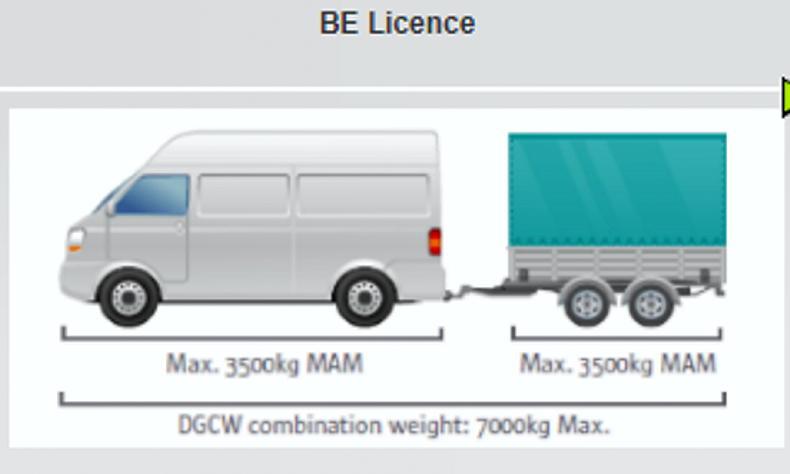
A BE licence is required when towing a trailer with a DGVW between 750kg and 3,500kg or once the combined load exceeds 3,500kg. \RSA
To put this into context, a 2018 1.6 TDI Volkswagen Caddy panel van with a maximum towing capacity of 1,400kg can tow a standard 8x5ft livestock trailer (725kg) and a load of up to 516kg on a standard B licence. This leaves the Caddy, with a DGVM of 2,127kg, and loaded trailer (1,241kg) at the combined weight limit for a driver with a standard B licence (3,500kg). The van is towing 1,241kg of its 1,400kg capacity.
Therefore, a Category BE licence is required when towing a trailer with a DGVW between 750kg and 3,500kg or if the trailer’s DGVW exceeds 3,500kg but the combined weight of the vehicle and loaded trailer does not exceed 7,000kg.
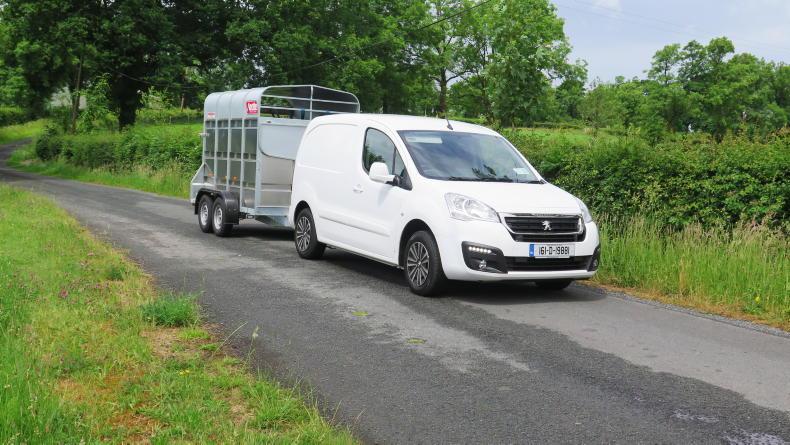
A trailer exceeding 750kg can be towed legally using a B licence once the combined vehicle and loaded trailer weight is not above 3,500kg.
Although a BE licence allows a DGCW (design gross combination weight) of up to 7,000kg, this is subject to the DGCW of the towing vehicle. For example, A BE licence is required to legally drive a 2016 2.5l diesel Isuzu D-max (2,950kg plated towing capacity) coupled with a tri-axle Ifor Williams livestock trailer (3,500kg DGVW and an unladen weight of 1,265kg) loaded with cows totalling 1,685kg. In this example, given that the D-max has a DGCW of 6,000kg, the combined weight of the loaded trailer and jeep must not exceed 6,000kg as this is the maximum weight the D-max is plated for. So, it is vitally important you contact your dealer or check what your vehicle is legally rated to tow as all vehicle makes and models vary.
Weights
As the driver of the vehicle, it is your responsibility to know the capacity and the limits of your vehicle, tow hitch and trailer, and to make sure you don’t operate beyond these. To find out what your vehicle is rated to tow, check the manufacturer’s statutory plate. This plate is normally located inside the passenger door or under the bonnet.
We took the Toyota Landcruiser in the graphic to the left as an example. Subtracting figure 1 (2,600kg) from figure two (5,400kg), gives us 2,800kg, which is the vehicle’s towing capacity, ie the weight you can legally tow. It’s important to note that if you exceed this weight, you are breaking the law.
To find out the DGVW of your trailer, check its manufacturer’s statutory plate. You can also contact the trailer manufacturer or authorised distributor.
On pages 4 and 5, example weights of new trailers are listed. Most modern 12ft and 14ft trailers have a DGVW of 3,500kg.
Towing trailers
If you have a trailer which is homemade and has no plate, the RSA advises asking a trailer manufacturer in your area if they will plate it for you. All new light trailers (under 3,500kg gross) sold since October 2012 must be plated by law. It’s also worth noting the speed limit when towing a trailer is 80km/h, unless a lower speed limit sign is posted.
O1 trailers (DGVW not exceeding 750kg) are not obliged to have brakes fitted unless they have a DGVW which is more than half the DGVW of the towing vehicle to which they are attached. Meanwhile, all O2 trailers (DGVW exceeding 750kg and not exceeding 3,500kg) must have brakes fitted on all wheels.
They must also be fitted with a service brake, a parking brake and a breakaway cable (or a secondary coupling as an alternative).
If the trailer has more than one axle and does not have an automatic breakaway device that activates its brakes if detached from the towing vehicle while in motion, then it must be fitted with brakes and a secondary coupling consisting of a chain or wire rope.
Currently, there is no legal requirement for trailers to have a roadworthiness test. However, if you’re towing a trailer, it is your responsibility as the driver to ensure that both the towing vehicle and trailer are safe and fit for purpose and legally compliant with all relevant legislation. This includes having adequate tread depth, tyres free from defects, working lights and brakes and a hitch that is in good condition.
Most people reading this article will have pulled a trailer behind a car, van or 4x4 at some stage, if not on a regular basis. However, are you up to date with the current rules and regulations to do so?
Anecdotal evidence would suggest many farmers have an idea, but are not fully in tune with the legalities. We take a look at the current rules and regulations.
Licences
The licensing requirements for trailers are broken down into two categories, depending on their design gross vehicle weight (DGVW), also known as maximum authorised mass (MAM). The two subcategories for licensing are trailers that have a DGVW up to 750kg and trailers that have a DGVW over 750kg, but not exceeding 3,500kg.
The standard Category B licence entitles you to tow a trailer with a DGVW of less than 750kg using a vehicle not exceeding 3,500kg. If the trailer’s DGVW is more than 750kg, then the combined weight of the vehicle and the trailer must not exceed 3,500kg.

A BE licence is required when towing a trailer with a DGVW between 750kg and 3,500kg or once the combined load exceeds 3,500kg. \RSA
To put this into context, a 2018 1.6 TDI Volkswagen Caddy panel van with a maximum towing capacity of 1,400kg can tow a standard 8x5ft livestock trailer (725kg) and a load of up to 516kg on a standard B licence. This leaves the Caddy, with a DGVM of 2,127kg, and loaded trailer (1,241kg) at the combined weight limit for a driver with a standard B licence (3,500kg). The van is towing 1,241kg of its 1,400kg capacity.
Therefore, a Category BE licence is required when towing a trailer with a DGVW between 750kg and 3,500kg or if the trailer’s DGVW exceeds 3,500kg but the combined weight of the vehicle and loaded trailer does not exceed 7,000kg.

A trailer exceeding 750kg can be towed legally using a B licence once the combined vehicle and loaded trailer weight is not above 3,500kg.
Although a BE licence allows a DGCW (design gross combination weight) of up to 7,000kg, this is subject to the DGCW of the towing vehicle. For example, A BE licence is required to legally drive a 2016 2.5l diesel Isuzu D-max (2,950kg plated towing capacity) coupled with a tri-axle Ifor Williams livestock trailer (3,500kg DGVW and an unladen weight of 1,265kg) loaded with cows totalling 1,685kg. In this example, given that the D-max has a DGCW of 6,000kg, the combined weight of the loaded trailer and jeep must not exceed 6,000kg as this is the maximum weight the D-max is plated for. So, it is vitally important you contact your dealer or check what your vehicle is legally rated to tow as all vehicle makes and models vary.
Weights
As the driver of the vehicle, it is your responsibility to know the capacity and the limits of your vehicle, tow hitch and trailer, and to make sure you don’t operate beyond these. To find out what your vehicle is rated to tow, check the manufacturer’s statutory plate. This plate is normally located inside the passenger door or under the bonnet.
We took the Toyota Landcruiser in the graphic to the left as an example. Subtracting figure 1 (2,600kg) from figure two (5,400kg), gives us 2,800kg, which is the vehicle’s towing capacity, ie the weight you can legally tow. It’s important to note that if you exceed this weight, you are breaking the law.
To find out the DGVW of your trailer, check its manufacturer’s statutory plate. You can also contact the trailer manufacturer or authorised distributor.
On pages 4 and 5, example weights of new trailers are listed. Most modern 12ft and 14ft trailers have a DGVW of 3,500kg.
Towing trailers
If you have a trailer which is homemade and has no plate, the RSA advises asking a trailer manufacturer in your area if they will plate it for you. All new light trailers (under 3,500kg gross) sold since October 2012 must be plated by law. It’s also worth noting the speed limit when towing a trailer is 80km/h, unless a lower speed limit sign is posted.
O1 trailers (DGVW not exceeding 750kg) are not obliged to have brakes fitted unless they have a DGVW which is more than half the DGVW of the towing vehicle to which they are attached. Meanwhile, all O2 trailers (DGVW exceeding 750kg and not exceeding 3,500kg) must have brakes fitted on all wheels.
They must also be fitted with a service brake, a parking brake and a breakaway cable (or a secondary coupling as an alternative).
If the trailer has more than one axle and does not have an automatic breakaway device that activates its brakes if detached from the towing vehicle while in motion, then it must be fitted with brakes and a secondary coupling consisting of a chain or wire rope.
Currently, there is no legal requirement for trailers to have a roadworthiness test. However, if you’re towing a trailer, it is your responsibility as the driver to ensure that both the towing vehicle and trailer are safe and fit for purpose and legally compliant with all relevant legislation. This includes having adequate tread depth, tyres free from defects, working lights and brakes and a hitch that is in good condition.







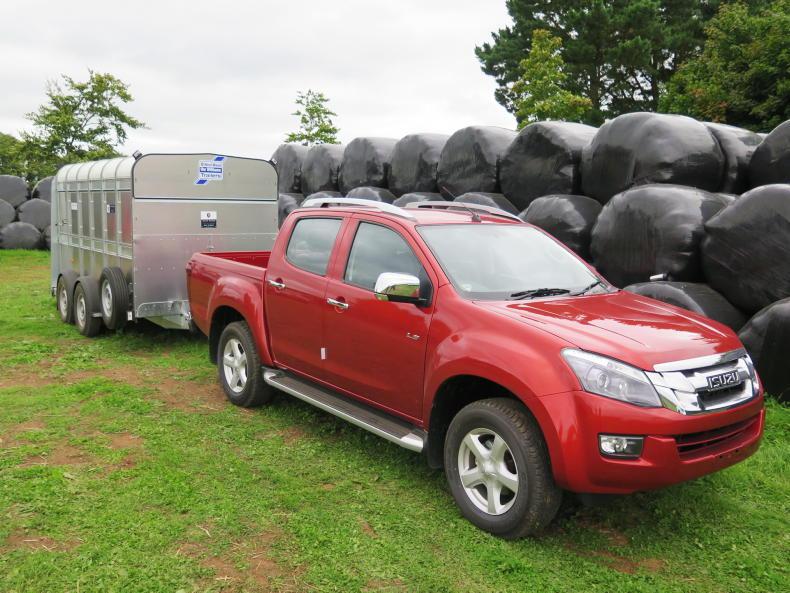



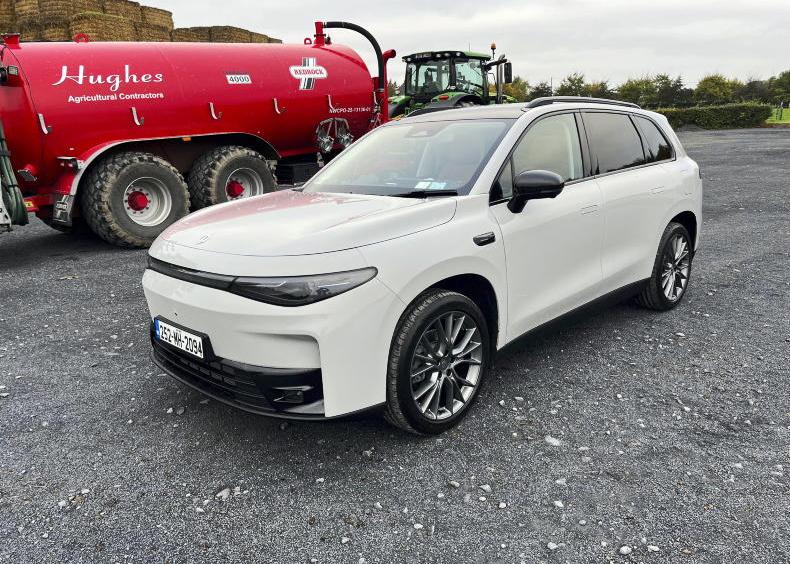
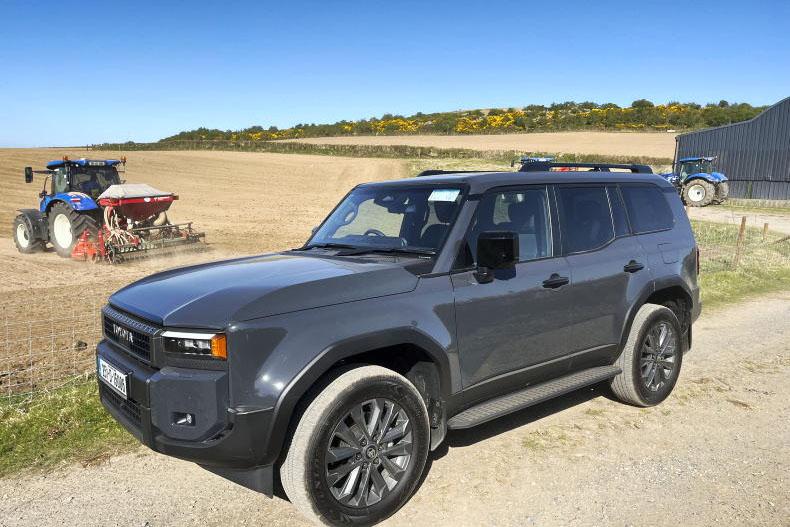
SHARING OPTIONS